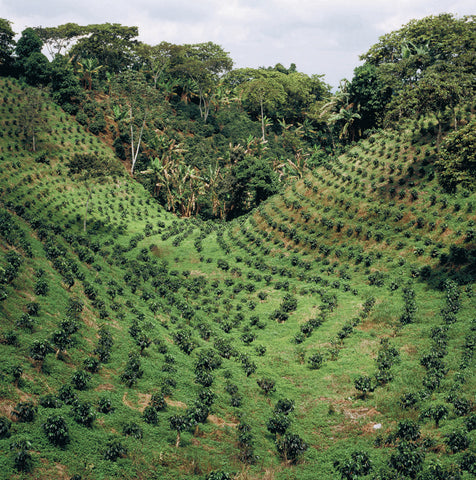Coffee requires a long production time. It starts with the seed that is harvested from the small coffee plant, which flowers and bears fruit a few years after it is planted. This raw material from distant lands is transformed into a flavor that is distributed across the world.

Yet few actually know the origin of coffee, its history, its social meaning. Just think that, in addition to the Homer’s citation, there are folktales that mention it, the most famous of which is “Dancing Goats and Dancing Dervishes”. The story, set in 8th century AC, tells of an Abyssinian goatherd named Kaldi (or Khalid) who was with his flock outside Mocha, a city in Yemen. One night he saw his flock of goats dance like crazy all night long after foraging on the red fruits of a large bush that grew abundantly in the area. The goatherd, surprised and curious, picked some of the berries and brought them to the monastery in Cheodet to learn their secret. At the monastery, the prior, Abbot Yahia, did not believe the goatherds story. Scared that it was the devils work, he tossed the berries into the fire. Once roasted, the berries unexpectedly released an intense, pleasant aroma. The abbot recovered the berries and put them in water to cool. That is how it was discovered that a black drink with a very pleasant taste could be given to the monks at the monastery so that they regained their strength and could pray all night long without falling asleep. This drink was called “kahwa”.

It is more probable that the Arabic name comes from Kaffa, a region in Ethiopia where a variety of Coffea grows spontaneously.
Coffee plants grow in the band between 25° latitude north and 25° latitude south, where the temperature, sunlight and nature of the soil are ideal for their growth. The beans are removed from the green berries once they have ripened to a bright cherry red. They are then dried in the sun. Of the 60 species of coffee, only 25 are used commercially or their fruit. Of these, four hold the top positions for coffee bean commerce: Coffea Liberica and Coffea Excelsa, as well as the most common and more important Coffea Arabica and Coffea Robusta. While in the same botanical family, these two species have different properties which define completely different flavors.

The Arabica variety is qualitatively better and represents about 70 percent of the worlds production. Its beans are small and long, with an intense aromatic perfume and a characteristic copper green color. Arabica plants grow well in high-mineral soils, especially those of volcanic origin, over 600 m above sea level. The idea climate should have an average temperature of 20 °C so that the berries ripen slowly, developing what once roasted will become sweet smooth flavors.
Similar to Coffea Arabica, the Robusta variety has branches that curve downwards, forming an umbrella. It flowers three times a year. Its irregular round yellow-green beans are smaller than those of the previous variety and contain more caffeine. Once roasted, these gives rise to a sharp bitter flavor.
There are two systems for processing raw coffee: dry or washed. In dry processing, or “natural coffee”, the fresh picked berries dried under the sun. In washed coffee, the pulp is removed by washing in special fermentation vats and then dried under the sun with only the parchment, the very last layer, protecting the bean.
The uniformity of a lot is an important to making blends with prized aromatic characteristics. For years we have sourced coffee from the same plantations, importing and re-selecting it at port upon arrival.
After the selection process, controls are performed in the company: visual inspection, fragrance and taste tests. Each type of coffee, what ever its origin, must meet the characteristics of its grade classification. The predominant characteristic must be defined and evaluated for possible aromatic blends. This leads to blends with balanced flavors.

Tasting requires knowledge of the ideal characteristics of each individual coffee and of its possible resonance in the blends it is used in. This skill is acquired slowly through continual first-hand on-the-job experience. Mixing and dosing different coffee beans, the coffee roaster prepares the blends. The nuances of the perfumes and aromas are infinite: fruity, flowery, spicy, chocolaty, and cocoa aftertastes multiply on the trained palate that must interpret them.
Our mission is to combine the best coffees in the world to produce excellent blends. Behind the senses that are illuminated by the flavor of a good cup of coffee are the ideas, selections, and people that, together, create new ideas. This is how, with a simple gesture, Goppion communicates the culture of knowledge, creating social awareness, and increasing social growth. As a family.
